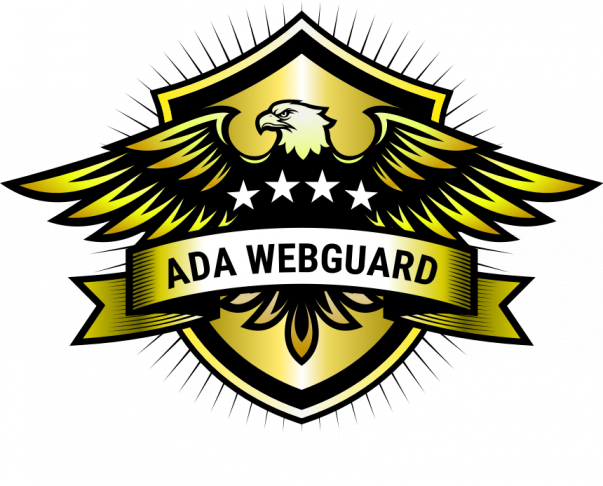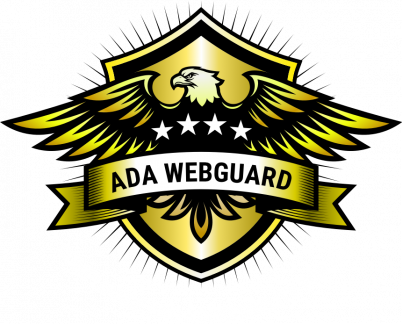Learn About Website Accessibility
Web accessibility means that websites, tools, and technologies are designed and developed so that people with disabilities can use them.
UNDERSTANDING ADA ACCESSIBILITY
First and foremost is for you as the owner, CEO or manager of a website where any customer interaction is desired, to realize that the Americans with Disabilities Act (ADA) is to assure that those with disabilities have an equal opportunity to navigate and enjoy your website.
The Web Content Accessibility Guidelines (WCAG) are part of a series of web accessibility guidelines published by The World Wide Web Consortium (W3C) Web Accessibility Initiative (WAI).
The guidelines and Success Criteria are organized around the following 4 principles, which lay the foundation necessary for anyone to access and use Web content.
Anyone or business that has a website must adhere to the following 4 WCAG (Web Content Accessibility Guidelines) Accessibility principles to be Compliant:
Principle 1: PERCEIVABLE
Typography, Images, Audio, and Video.
- Don’t stop your users from reading, watching, or listening to your content!
Principle 2: OPERABLE
Interfaces and Navigation, Keyboard Navigation, Progressive Enhancement
- Don’t keep your users from getting to all your web pages and filling out your forms!
Principle 3: UNDERSTANDABLE
Be Simple and Explicit, Avoid Assumptions
- Don’t prevent your users from understanding the sites’ intended meaning!
Principle 4: ROBUST
Semantic Markup, Responsive Design
- Don’t prevent your users from accessing your web content from a variety of assistive devices!
To achieve Full Compliance of your website, ADA WebGuard recommends conducting both 1. Automated Testing and 2. Manual Auditing using all WCAG AA Success Criteria. WCAG 2.0 & 2.1 has a total of 78 Success Criteria

WCAG 2.0 & 2.1 has a total of 78 Success Criteria
1) ADA WebGuard’s Automated Testing platform:
Automated tests are essential when evaluating your website for ADA non-compliant accessibility errors on a technical level, and are especially important when developing, remediating and/or maintaining a website.
Automated testing alerts you to errors like:
- Form fields
Automated tests make sure that all entry fields have labels. - COLOR
Automated tests verify that color combinations in a text are used appropriately. - LINKS
Automated testing quickly determines that all links are functioning as they are supposed to. - AND MORE…
2) ADA WebGuard’s Manual Testing platform:
Our Manual testing allows for our team of TRAINED and CERTIFIED PROFESSIONALS to evaluate your website for ADA non-compliant Critical Accessibility Failures. Manual testing evaluates websites without using a mouse simulating a disabled user. We use a combination of keyboard-only interactions, screen readers that convert text to spoken audio and web browser plug-ins to determine the accessibility of your website. While automated testing accounts for some of the WCAG 2.1 criteria, manual testing accounts for Critical Accessibility Failures that Automated software can’t, like:
- SKIP TO MAIN CONTENT LINK
This prevents users from having to go through your entire navigation over and over again just to get to the main content of your page. - PAGE TITLES
Page titles are what is visible in tabs or bookmarks and should be appropriate to the page content. - HEADINGS
Headings accurately describe the content. - AND MANY MORE!
Overlays and Widgets are NOT a Complete Solution
Overlays and widgets for your website do not protect you from legal action as they are insufficient to pick up all compliance and accessibility barriers.
Increase Your Audience

Businesses are Missing a Large Portion of their Online Audience
Approximately 1 in 5 people in the United States, or 64 million, identify as individuals with disabilities, according to the American Institutes for Research. If you are not making your web content fully accessible, you are potentially missing out on 20% of your audience.
Worldwide, businesses are missing out on approximately 1 billion people who, depending on their abilities, may not be able to buy their product, book a vacation, enjoy their video, navigate their website, read their documents, make reservations, and more.
By making your website accessible and opening your content to this huge percentage of the population, your business is certain to improve.
Why is Website Accessibility Essential to your Business...?
LEGAL PERSPECTIVE
…you can be sued for not complying with accessibility laws.
Only through compliance can you protect yourself when accused or when sued for non compliant websites.
BUSINESS PERSPECTIVE
…barriers keep clients away.
- 1 in 5 People are Disabled
- 10.1 Million are Blind or Visually Impaired
- 7.6 Million are Auditory Impaired
- 19 Million are Motor Impaired (can’t use a mouse)
FINANCIAL PERSPECTIVE
…The American Institutes for Research pegged The Working-Age Adults with Disabilities group’s disposable income at $490 Billion in 2018.
THE FUTURE
…as we age, so does our sight, hearing and physical abilities. In 10, 20, 30 years, Accessibility may be important to you!
Types of Disabilities and Online Challenges

It is important to understand the different types of disabilities and online challenges that must be accommodated.
SIGHT
(blind, color blind, partially sighted)
HEARING
(deaf, hard of hearing)
MOTOR
(physical impairment, slow movement)
COGNITIVE
(learning difficulties, problems with reading)
Disability is essentially the permanent or temporary absence of a given sense. When you think of disabilities, you probably tend to think about permanent, severe disabilities (e.g., since birth), rather than including the millions of people that acquire a disability within their lifetime.
Better User Experience
“User experience” encompasses all aspects of the end-user’s interaction with the company, its services, and its products.

In commerce, user experience (UX) refers to a person’s emotions and attitudes about using a product, system or service. It includes the practical, experiential, affective, meaningful and valuable aspects of human–computer interaction and product ownership.
Additionally, it includes a person’s perceptions of system aspects such as utility, ease of use and efficiency. User experience may be subjective in nature to the degree that it is about individual perception and thought with respect to a system.
In the end, user experience is about how a user interacts with, and experiences, a product.
Better User Experience = Better Business
Financial Growth by Increasing Brand Loyalty
Better Engagement, Better Comprehension, Increased views, Higher Search Engine Optimization (SEO) Search… Increase Revenue!
If businesses have any video or audio content, adding captions, transcripts, and descriptive text – the accessible alternatives for people who have trouble hearing or seeing – will also improve your SEO.
Closed captions provide a text alternative for spoken content. Because search engines like Google can’t watch a video, this text is the best way for them to correctly index your videos. Discovery Digital Networks did a study to see the impact of captions on their SEO, and they found that adding captions to their YouTube videos increased their views by 7.32%.
Other accessibility measures that improve SEO include proper page titles, heading structures, and well composed link text.

What additional benefits are there in making a website accessible?
LAW
Reduce the risk of Legal Action for non-compliance.
Tax Rebate
Section 44 of the U.S. IRS tax code gives qualifying small businesses a tax rebate for expenses incurred while making their businesses more ADA Compliant. Please contact your accountant for more information.
Search Engine Optimization
Many accessibility guidelines are the same as SEO techniques. This means that incorporating accessibility will at the same time help to improve websites’ search engines ranking giving your website more visibility.
Increase website usage
As accessible websites are easier to find, access and use, they maximize the number of possible visitors. This in turn can boost a company’s profits, e-commerce websites can increase sales and non-profit organizations can get additional funding.
Increase usability
In general, accessibility increases usability of a website, and in effect improves quality of user experience. Some accessibility guidelines are similar to the usability ones, such as promoting clear and consistent design and navigation, dividing blocks of information into logical sections, good color contrast, etc. Increased usability makes users more likely to return to the website, use it more thoroughly and recommend it to others.
Reduced site development and maintenance time
Although incorporating accessibility can increase site development time initially, in long term it reduces time spent on site improvements and maintenance. Using style sheets and coding to standards reduces the effort needed to change presentation across a site.

Is your website accessible to people with disabilities?
Now you can check your own website accessibility in 3 easy steps with ADA WebGuard’s EZ Check Do-It-Yourself application.

